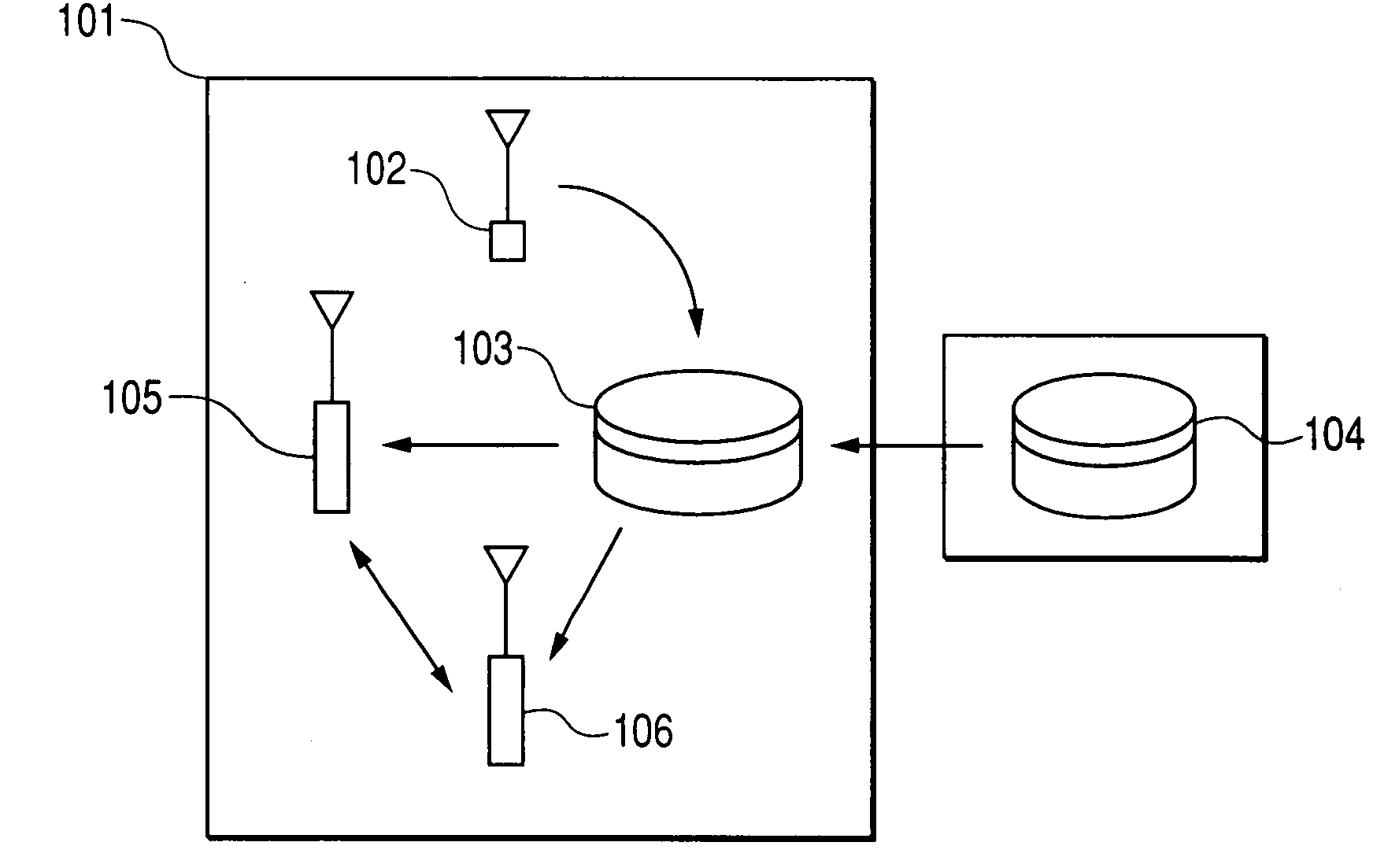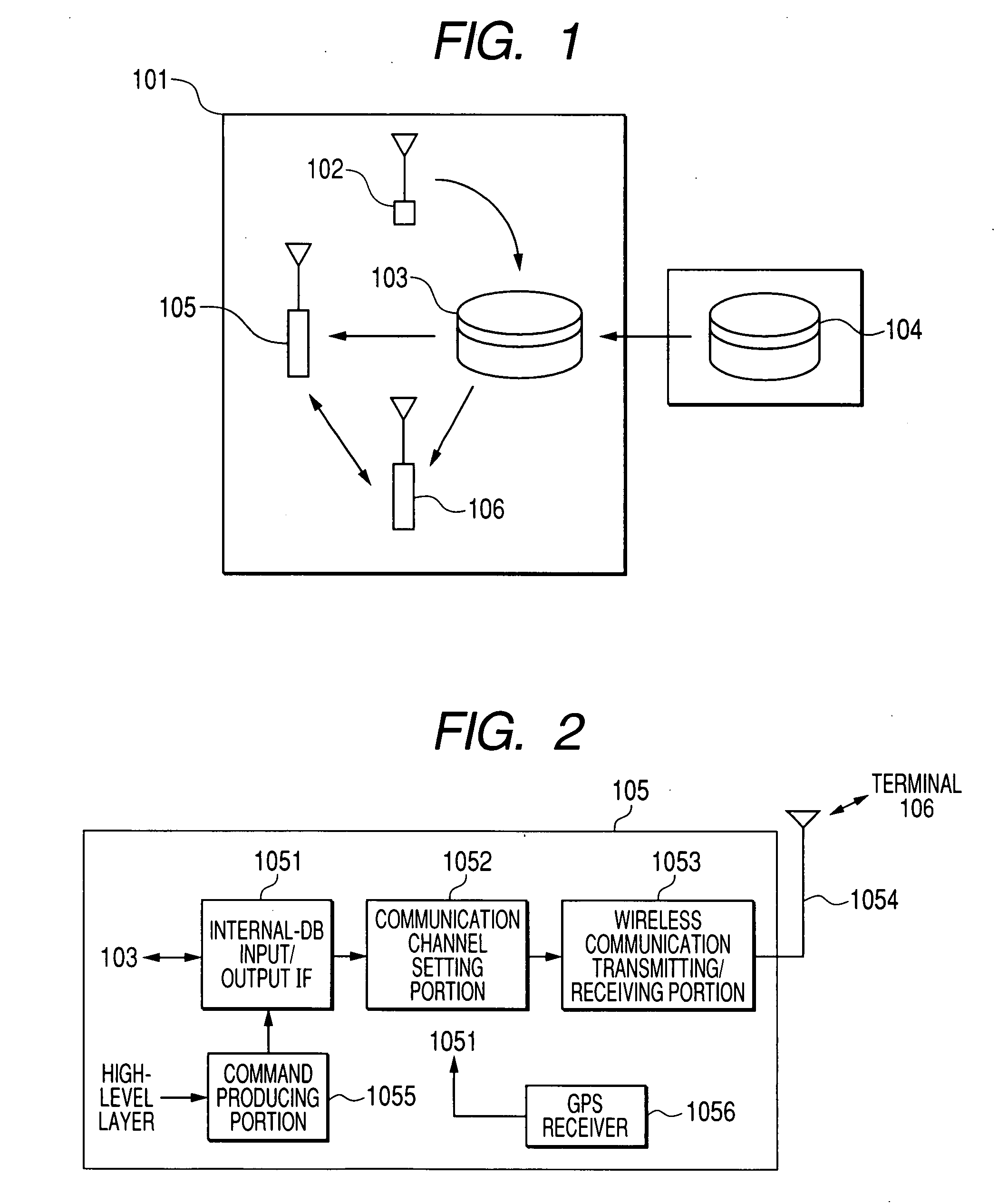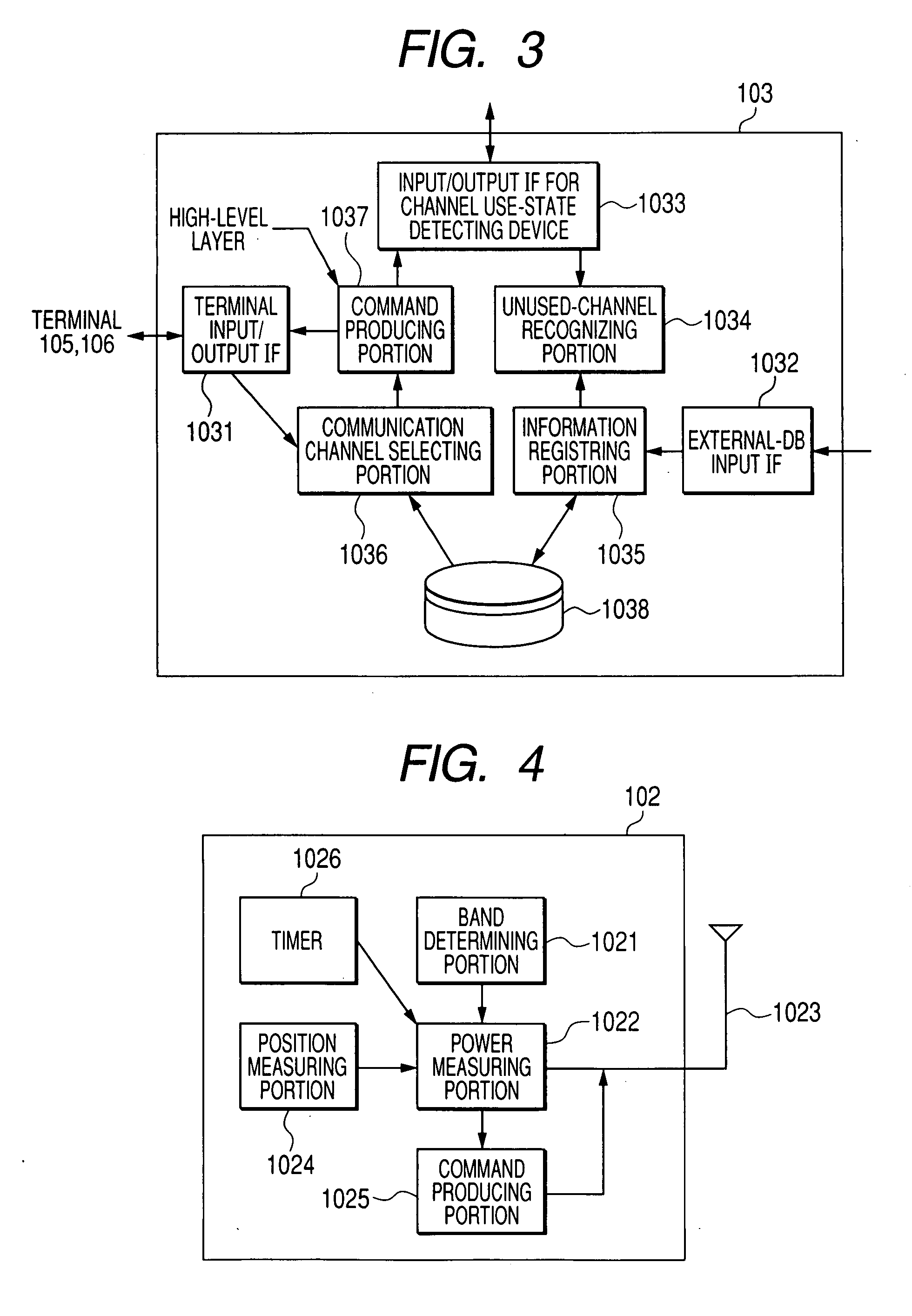Cognitive radio system
a radio system and radio technology, applied in the field of cognitive radio systems, can solve the problems of a large amount of information which cannot be obtained and the use-state is hardly known by a wireless terminal device alon
- Summary
- Abstract
- Description
- Claims
- Application Information
AI Technical Summary
Benefits of technology
Problems solved by technology
Method used
Image
Examples
first embodiment
[0050]FIG. 1 is a diagram schematically showing the configuration of a cognitive radio system of a first embodiment of the invention. The cognitive radio system comprises: a wireless communication system 101 including wireless terminal devices 105, 106 that communicate with each other; a wireless-channel use-state detecting device 102 (hereinafter, referred to as “detecting device 102”) which detects the use-state of a wireless channel that can be used by the wireless terminal devices 105, 106; an internal wireless-channel use-state database device 103 (hereinafter, referred to as “internal DB 103”); and an external wireless-channel use-state database device 104 (hereinafter, referred to as “external DB 104”) which stores wireless-channel use-states of frequency bands that are allocated as licensed channels to radio systems different from the wireless communication system 101 (for example, a police radio and an emergency radio which is used in a disaster situation).
[0051]FIG. 2 is ...
second embodiment
[0100] Next, a second-embodiment of the invention will be described. In the first embodiment described above, recognition of an unused channel is performed by the internal DB 103. In the second embodiment, from channel use-state information supplied from the internal DB 103, the terminals 105, 106 recognize an unused channel, and set a communication channel.
[0101]FIG. 9 is a diagram schematically showing the configurations of the terminals 105, 106 in the second embodiment. The terminals 105, 106 have the same configuration, and therefore description of the terminal 106 is omitted. In FIG. 9, components identical with those of FIG. 2 are denoted by the same reference numerals, and their detailed description is omitted. The figure is different from FIG. 2 in that an unused-channel recognizing portion 1056 is disposed.
[0102]FIG. 10 is a sequence diagram showing an example of the process and message exchange in the second embodiment. First, the wireless-channel use-state detecting de...
third embodiment
[0106] Next, a third embodiment of the invention will be described.
[0107]FIG. 11 is a diagram schematically showing the configuration of a system in the third embodiment. In the embodiment, a television broadcast (TV broadcast), and a local area network (W-LAN) using a radio system share a frequency band for the TV broadcast. A TV broadcast antenna 201 transmits a broadcast signal to a certain area by using several frequency bands. At this time, a wireless information DB 202 in a broadcast area stores information such as the frequency band of the current broadcast, the position of a broadcast station, and the radio-wave arrival range.
[0108] In private houses 218, 228, a signal transmitted from the TV broadcast antenna 201 is received by TV receiving antennas 213, 223. The TV receiving antenna 223 is disposed outdoors. It is assumed that TVs 214, 224 can share information by wire or wireless through W-LAN access points (APs) 215, 225 in the private houses 218, 228. Therefore, the T...
PUM
 Login to View More
Login to View More Abstract
Description
Claims
Application Information
 Login to View More
Login to View More - R&D
- Intellectual Property
- Life Sciences
- Materials
- Tech Scout
- Unparalleled Data Quality
- Higher Quality Content
- 60% Fewer Hallucinations
Browse by: Latest US Patents, China's latest patents, Technical Efficacy Thesaurus, Application Domain, Technology Topic, Popular Technical Reports.
© 2025 PatSnap. All rights reserved.Legal|Privacy policy|Modern Slavery Act Transparency Statement|Sitemap|About US| Contact US: help@patsnap.com



